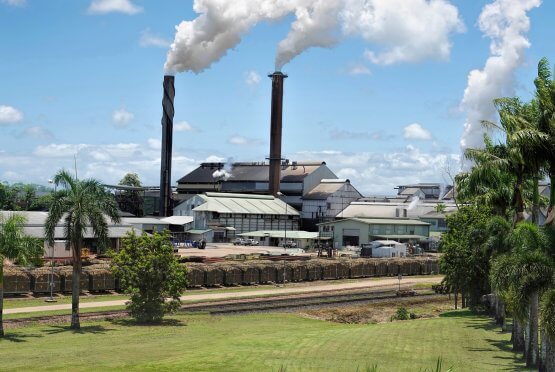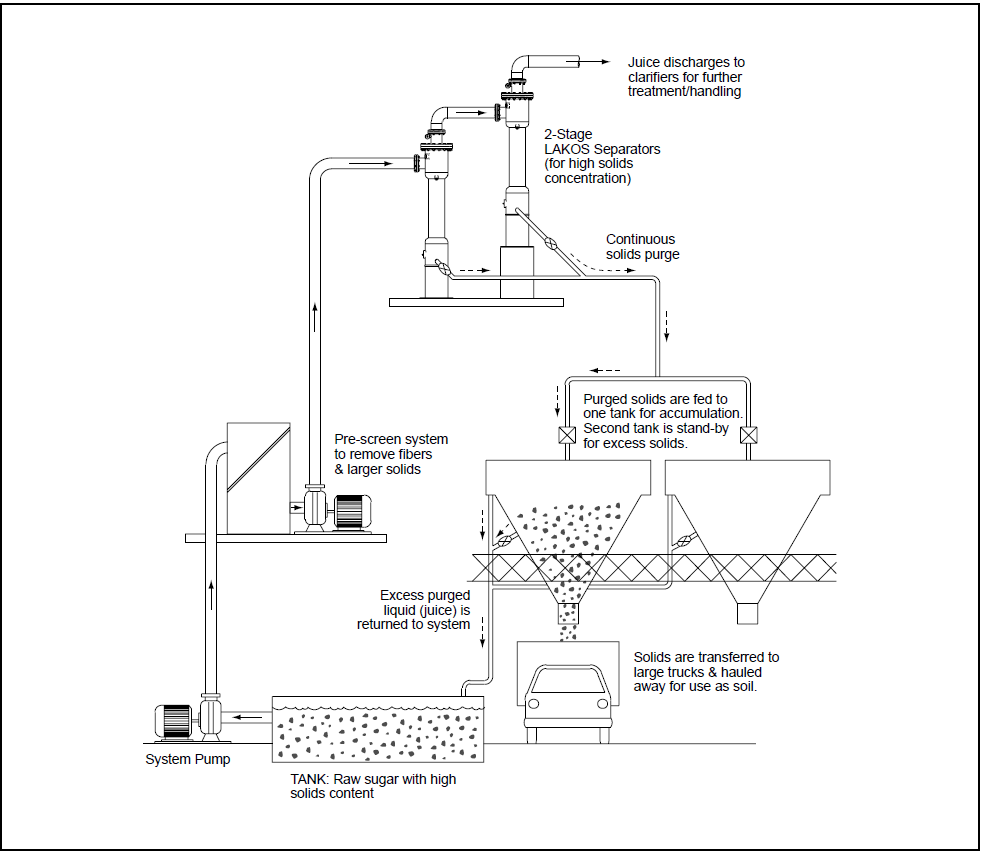Sugar Mill Reduces Sand & Dirt, Increasing Efficiency

Sugar Mills Reduces Sand & Dirt, Increasing Efficiency
System Identification: Pre-filtration of raw sugar juice prior to clarification.
Solids/Liquid: Sand, dirt and sugar cane fiber (bagasse) and sugar beet pulp.
Problem: Filtration problems plague sugar mills in several stages o the milling process. Raw sugar juice contains solids, including sand, dirt and bagasse (fiber) or sugar beet pulp. While a majority of the pulp and fibrous matter can be removed using horizontal screens, high concentrations allow some solids to pass through the screens. Both beet and cane sugar mills sought an effective method to filter remaining sediment out of the raw juice, thereby reducing the load on the clarifier. An overload of solids in the clarifier can contribute to breakdown, as scrapers or other mechanical devices are unable to handle the volume of solids, leading to costly and time consuming repairs and maintenance.
Solution: LAKOS Separators installed on the discharge of the sugar tank successfully remove up to 35 tons of sand and dirt from the 7,000 tons of raw sugar cane processed daily in one Mexican sugar mill. The remaining sugar juice, relieved of the heavy solids, can now pass freely through the clarifier, reducing the likelihood of solids buildup in the clarifying tank. With fewer solids reaching the clarifier, maintenance and repair needs are diminished, avoiding expensive system shutdown during heavy production periods. An additional benefit is a reduction in the need for flocculants used after the separator. With the heavier sand and dirt removed, flocculant usage can be calculated on a lower concentration of solids, and can be used efficiently and more effectively. Sugar mills employing the LAKOS Separator have reported up to $15,000 savings per season in reduced flocculant usage.
Use of the separator also reduces downstream filtration requirements, causing less wear on pumps, impellers, valves and fittings and protecting heat exchangers. Energy and labor savings are realized. LAKOS Super Separators (two-stage) are often employed in the industry, due to the solids concentrations of up to 2.5 percent by volume (25,000 parts per million). LAKOS Separators are successfully being used in both beet and sugar cane applications in several countries, with mill engineers satisfied with their superior performance and value.
MILL RETAINS MORE SUGAR JUICE WITH LAKOS
A creative approach to solids handling has allowed the Pujiltic Sugar Mill in Chiapas, Mexico to reclaim additional sugar juice from discarded bagasse (fiber). Plant engineers worked with LAKOS to develop a solids handling system that limits the eventual liquid loss to .08%. Additionally, the sugar mill has found a market for the purged solids: their rich fiber and sugar content makes an effective plant fertilizer Others who have used LAKOS

Separators for similar applications:
Jose Maria Martinez; Jalisco, Mexico
San Gabriel; Veracruz, Mexico
Valdez; Guayaquil, Ecuador
Sucrerie Tirlemont, Belgium
Irish Sugar Company, Ireland
Benuline Nederland B.V., Roosendaal, Netherlands
Amalgamated Sugar; Nyssa, Oregon